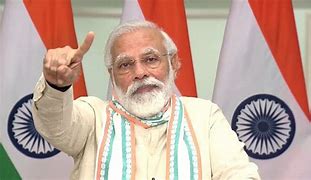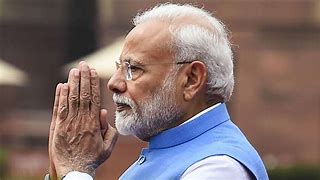Feature
PM, Tripura CM to discuss special status for northeastern states

Agartala: Prime Minister Narendra Modi will on Tuesday hold talks with Tripura Chief Minister Manik Sarkar on retaining the special category status for the eight northeastern states.
“The prime minister is eager to discuss the special category status issue with me first,” Sarkar, a member of the Communist Party of India-Marxist (CPI-M) politburo, told.
He said all the chief ministers of the eight northeastern states had approached Modi for a meeting over their “joint demand of retaining the special category status for the eight states”.
“But the prime minister wanted to meet me first to discuss the issue,” Sarkar said.
Sarkar, who has been the chief minister of Tripura for more than 17 years, on Monday left for New Delhi where he will meet Modi on Tuesday.
Cutting across political lines, the chief ministers of the eight states ruled by the Congress, Left and regional parties had earlier urged Modi to maintain the special category status.
“The resolution was recently sent to the prime minister and the chief ministers of the eight states sought to meet with him on the issue,” Sarkar said before leaving for the national capital.
“The special status must be maintained to ensure that these states continue to avail financial help and assistance from the central government to help bring these underdeveloped states at par with the other mainland states,” Sarkar told.
Sarkar took the initiative and had drafted the resolution two months back that was adopted by the other chief ministers.
The resolution has been signed by his counterparts Tarun Gogoi (Assam), Lal Thanhawla (Mizoram), Mukul Sangma (Meghalaya), T.R. Zeliang (Nagaland), Nabam Tuki (Arunachal Pradesh), Okram Ibobi Singh (Manipur) and Paban Chamling (Sikkim).
All these states have non-BJP governments except Nagaland, where the Bharatiya Janata Party is a partner of the ruling Nagaland People’s Front-led Democratic Alliance of Nagaland.
Assam, Arunachal Pradesh, Mizoram, Manipur and Meghalaya are ruled by the Congress, while Tripura has a CPI-M led Left Front government and Sikkim is ruled by the Sikkim Democratic Front.
Sarkar, 66, said “After scrutinising the 14th Finance Commission recommendations and the union budget for the current financial year, it appears that the special category status of the northeastern states is going to be ceased.”
Sarkar said all the chief ministers felt this would be “a big blow to the interest of the industry starved backward region which has been suffering from inadequate infrastructure and under-development for many decades giving birth to terrorism, ethnic unrest and numerous problems”.
“This dangerous and disastrous move of discontinuing special category tag cannot be accepted at this stage,” he said.
There are 11 states in India which are clubbed in the special status category.
The special category tag was first given to three states – Assam, Jammu and Kashmir and Nagaland – in 1969 after the Fifth Finance Commission recommended additional assistance to some disadvantaged states in the form of central aid and tax holidays.
Currently, the eight northeastern states, Himachal Pradesh, Jammu and Kashmir and Uttarakhand have the special category tag.
The funding pattern for the special category states for central schemes was in the 90:10 ratio where 90 percent of the total expenditure is borne by the central government while 10 percent is contributed by the state.
Sarkar, known for his clean image and good governance in Tripura, said: “Northeastern states of India deserve a special dispensation despite the region having abundant human and natural resources. The resources remain untapped because of the faulty policy of the central government.”
The Left leader is confident that the region has immense scope to benefit economically through trade and other economic activities with the five neighbouring countries, including China, Myanmar and Bangladesh.
At the same time, he said the future of the northeastern states was uncertain because the performance of the North Eastern Council and ministry of Development of North Eastern Region (DoNER) was “extremely disappointing”.
Only 250 km out of the northeast’s 5,687 km outer perimeter touches India. The remaining represents international boundaries with China (1,300 km), Myanmar (1,643 km), Bhutan (516 km), Bangladesh (1,880 km) and Nepal (97 km).
Entertainment
Meghalaya Reserves Legalized Gambling and Sports Betting for Tourists

The State Scores Extra High on Gaming-Friendly Industry Index
Meghalaya scored 92.85 out of 100 possible points in a Gaming Industry Index and proved to be India’s most gaming-friendly state following its recent profound legislation changes over the field allowing land-based and online gaming, including games of chance, under a licensing regime.
The index by the UK India Business Council (UKIBC) uses a scale of 0 to 100 to measure the level of legalisation on gambling and betting achieved by a state based on the scores over a set of seven different games – lottery, horse racing, betting on sports, poker, rummy, casino and fantasy sports
Starting from February last year, Meghalaya became the third state in India’s northeast to legalise gambling and betting after Sikkim and Nagaland. After consultations with the UKIBC, the state proceeded with the adoption of the Meghalaya Regulation of Gaming Act, 2021 and the nullification of the Meghalaya Prevention of Gambling Act, 1970. Subsequently in December, the Meghalaya Regulation of Gaming Rules, 2021 were notified and came into force.
All for the Tourists
The move to legalise and license various forms of offline and online betting and gambling in Meghalaya is aimed at boosting tourism and creating jobs, and altogether raising taxation revenues for the northeastern state. At the same time, the opportunities to bet and gamble legally will be reserved only for tourists and visitors.
“We came out with a Gaming Act and subsequently framed the Regulation of Gaming Rules, 2021. The government will accordingly issue licenses to operate games of skill and chance, both online and offline,” said James P. K. Sangma, Meghalaya State Law and Taxation Minister speaking in the capital city of Shillong. “But the legalized gambling and gaming will only be for tourists and not residents of Meghalaya,” he continued.
To be allowed to play, tourists and people visiting the state for work or business purposes will have to prove their non-resident status by presenting appropriate documents, in a process similar to a bank KYC (Know Your Customer) procedure.
Meghalaya Reaches Out to a Vast Market
With 140 millions of people in India estimated to bet regularly on sports, and a total of 370 million desi bettors around prominent sporting events, as per data from one of the latest reports by Esse N Videri, Meghalaya is set to reach out and take a piece of a vast market.
Estimates on the financial value of India’s sports betting market, combined across all types of offline channels and online sports and cricket predictions and betting platforms, speak about amounts between $130 and $150 billion (roughly between ₹9.7 and ₹11.5 lakh crore).
Andhra Pradesh, Telangana and Delhi are shown to deliver the highest number of bettors and Meghalaya can count on substantial tourists flow from their betting circles. The sports betting communities of Karnataka, Maharashtra, Uttar Pradesh and Haryana are also not to be underestimated.
Among the sports, cricket is most popular, registering 68 percent of the total bet count analyzed by Esse N Videri. Football takes second position with 11 percent of the bets, followed by betting on FIFA at 7 percent and on eCricket at 5 percent. The last position in the Top 5 of popular sports for betting in India is taken by tennis with 3 percent of the bet count.
Local Citizens will Still have Their Teer Betting
Meghalaya residents will still be permitted to participate in teer betting over arrow-shooting results. Teer is a traditional method of gambling, somewhat similar to a lottery draw, and held under the rules of the Meghalaya Regulation of the Game of Arrow Shooting and the Sale of Teer Tickets Act, 2018.
Teer includes bettors wagering on the number of arrows that reach the target which is placed about 50 meters away from a team of 20 archers positioned in a semicircle.
The archers shoot volleys of arrows at the target for ten minutes, and players place their bets choosing a number between 0 and 99 trying to guess the last two digits of the number of arrows that successfully pierce the target.
If, for example, the number of hits is 256, anyone who has bet on 56 wins an amount eight times bigger than their wager.























